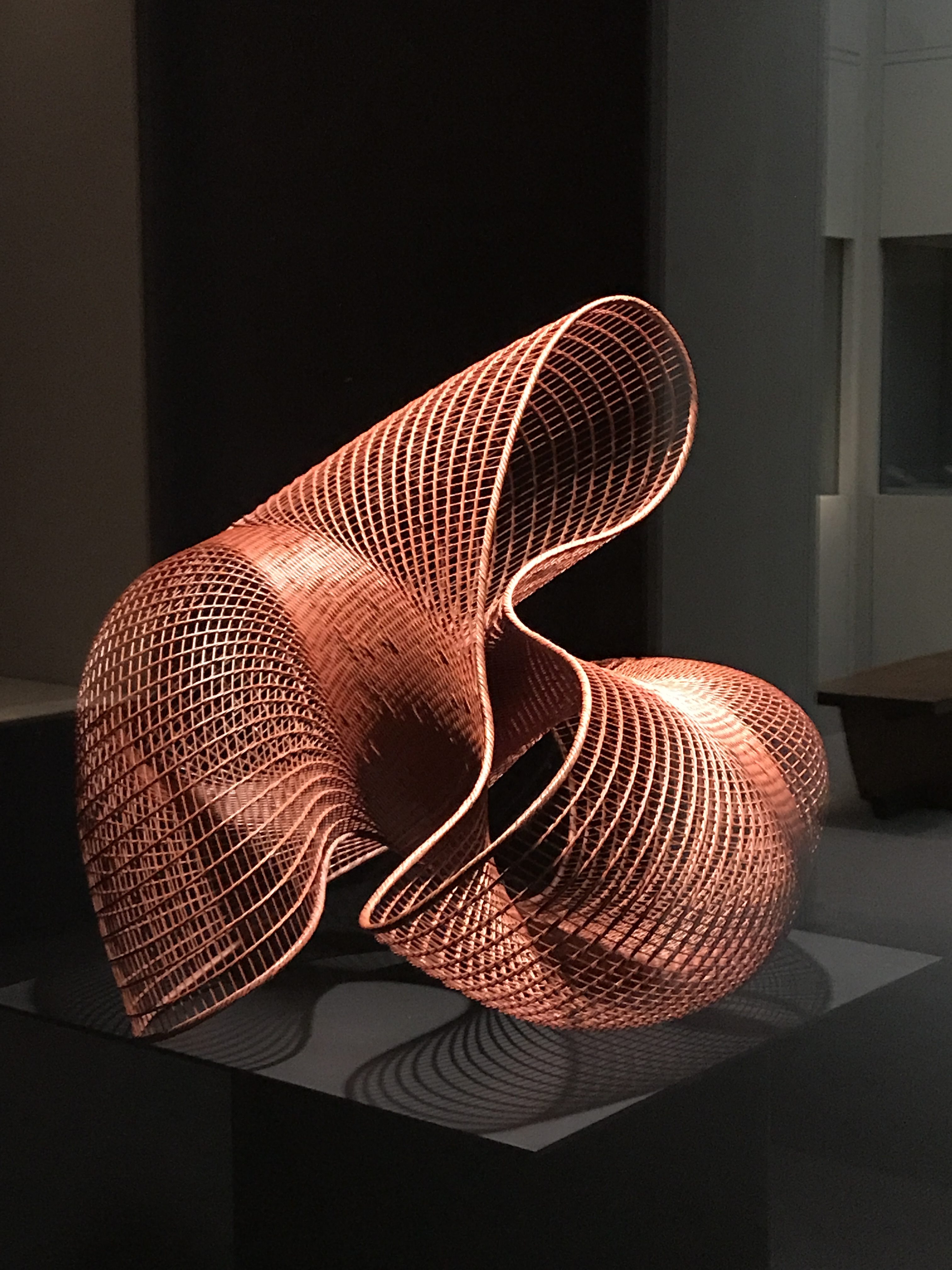The art of boro is one born of necessity—agricultural and working class families prolonged the lives of their clothing and cloth possessions through meticulous quilt-stitching to strengthen them, and via patching holes with scraps of fabric. Over the years, the resulting textiles have become sought after pieces and exquisite, patchwork fields of varying blues. They expose a rich cultural history that has, for generations, been relegated to the sidelines.
The technique of dying with indigo in Japan goes back to the 7th Century where it was introduced from India via the Silk Road. Japanese indigo dyeing, known as Aizome, started as a luxury for the aristocratic and samurai classes. By the 19th Century indigo-dyed cloth had become so prevalent that, upon Japan’s opening to the West in 1853, one English observer saw enough of the hue to term it “Japan Blue.”
Les Ateliers Courbet is a gallery space in Manhattan’s Nolita that features extraordinary artisanal collections in exhibition and workshop events. The Boro and Indigo exhibition opens September 8 and is ongoing until October 1st. The beautiful textile pieces come from Japanese collectors and experts Yokiko Koide, Ogawa Shouten, Minagawa and Stephen Szczepanek.
Les Ateliers Courbet
175 Mott Street, New York 10012
T. 212 226 7378
 Honda Shoryu, Timber bamboo and rattan, 2000[/caption]
There is a period missing in the timeline of human development, that of the Bamboo Age. Bamboo's widespread use since earliest times - particularly in East and Southeast Asia - elevates this extraordinary plant to almost mythic status. It has been used as transport (wheeled vehicles), building material, food, weapon, musical instrument and, even, poison. For hundreds of years, simple, everyday utensils as well as refined bamboo vessels were made according to local traditions and techniques passed down from generation to generation. Most ubiquitous of all, perhaps, is the basket.
It was not until the end of the 19th century that bamboo craftsmanship began to be recognized as one of the traditional Japanese decorative arts, and, later, as an art form. As with other handmade arts in Japan, there were lineages of craftsmen who handed down techniques and developed their personal styles; Masters emerged, recognized as National Living Treasures. Six of these artists are represented in this stunning show of 90 baskets collected by Diane and Arthur Abbey since the 1990s. The show comes to a close soon at the Met Museum.
[gallery columns="2" size="full" ids="8396,8397"]
FYI: The 64th Japan Traditional Kogei - Art Crafts - Exhibition will take place at the Hiroshima Prefectural Art Museum between February 23 and March 11, 2018
"
["post_title"]=>
string(27) "Bountiful, Beautiful Bamboo"
["post_excerpt"]=>
string(0) ""
["post_status"]=>
string(7) "publish"
["comment_status"]=>
string(4) "open"
["ping_status"]=>
string(4) "open"
["post_password"]=>
string(0) ""
["post_name"]=>
string(26) "bountiful-beautiful-bamboo"
["to_ping"]=>
string(0) ""
["pinged"]=>
string(0) ""
["post_modified"]=>
string(19) "2017-09-14 10:20:27"
["post_modified_gmt"]=>
string(19) "2017-09-14 14:20:27"
["post_content_filtered"]=>
string(0) ""
["post_parent"]=>
int(0)
["guid"]=>
string(31) "http://lisalindblad.com/?p=8394"
["menu_order"]=>
int(0)
["post_type"]=>
string(4) "post"
["post_mime_type"]=>
string(0) ""
["comment_count"]=>
string(1) "0"
["filter"]=>
string(3) "raw"
}
}
Honda Shoryu, Timber bamboo and rattan, 2000[/caption]
There is a period missing in the timeline of human development, that of the Bamboo Age. Bamboo's widespread use since earliest times - particularly in East and Southeast Asia - elevates this extraordinary plant to almost mythic status. It has been used as transport (wheeled vehicles), building material, food, weapon, musical instrument and, even, poison. For hundreds of years, simple, everyday utensils as well as refined bamboo vessels were made according to local traditions and techniques passed down from generation to generation. Most ubiquitous of all, perhaps, is the basket.
It was not until the end of the 19th century that bamboo craftsmanship began to be recognized as one of the traditional Japanese decorative arts, and, later, as an art form. As with other handmade arts in Japan, there were lineages of craftsmen who handed down techniques and developed their personal styles; Masters emerged, recognized as National Living Treasures. Six of these artists are represented in this stunning show of 90 baskets collected by Diane and Arthur Abbey since the 1990s. The show comes to a close soon at the Met Museum.
[gallery columns="2" size="full" ids="8396,8397"]
FYI: The 64th Japan Traditional Kogei - Art Crafts - Exhibition will take place at the Hiroshima Prefectural Art Museum between February 23 and March 11, 2018
"
["post_title"]=>
string(27) "Bountiful, Beautiful Bamboo"
["post_excerpt"]=>
string(0) ""
["post_status"]=>
string(7) "publish"
["comment_status"]=>
string(4) "open"
["ping_status"]=>
string(4) "open"
["post_password"]=>
string(0) ""
["post_name"]=>
string(26) "bountiful-beautiful-bamboo"
["to_ping"]=>
string(0) ""
["pinged"]=>
string(0) ""
["post_modified"]=>
string(19) "2017-09-14 10:20:27"
["post_modified_gmt"]=>
string(19) "2017-09-14 14:20:27"
["post_content_filtered"]=>
string(0) ""
["post_parent"]=>
int(0)
["guid"]=>
string(31) "http://lisalindblad.com/?p=8394"
["menu_order"]=>
int(0)
["post_type"]=>
string(4) "post"
["post_mime_type"]=>
string(0) ""
["comment_count"]=>
string(1) "0"
["filter"]=>
string(3) "raw"
}
}

